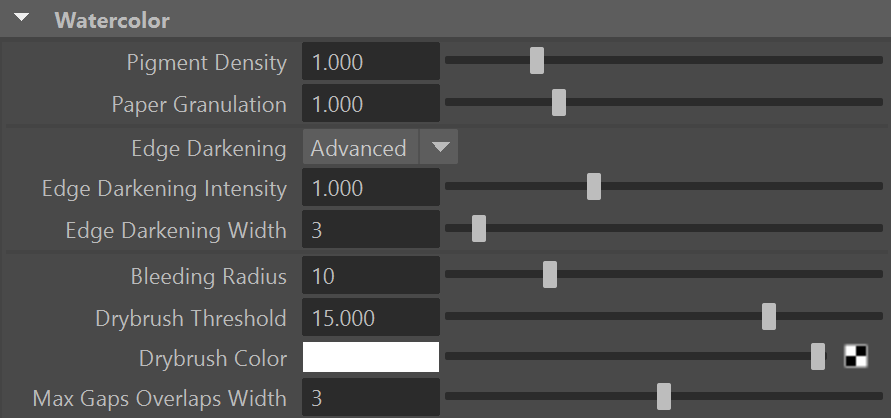The Watercolor Stylization brings real-time watercolor to 3D objects and animation within Autodesk Maya!
The Watercolor style emulates the traditional watercolor animation aesthetic, without the usual flickering associated with when showing multiple watercolor paintings in sequence. Based on the award-winning research of Montesdeoca et al. and Bousseau et al., we are continuously improving upon it with new effects and controls.
Main Features
- Pigment-based effects such as pigment turbulence and bleeding
- Edge-based effects such as edge darkening and gaps & overlaps
- Canvas-based effects such as paper granulation and distortion
- canvas can be attached to the underlaying motion
- Use PaintFX and NoiseFX to attach effects onto the animation
- Use proxies to control the style with invisible objects
- The stylization is also available in Nuke for Indie/Studio subscribers to add the watercolor style to offline renders (i.e., Arnold, Renderman)
The style can be art-directed at each level of control with MNPRX and its uber material.

Featured examples
Style attributes
To refine and customize the watercolor style, a series of global watercolor attributes are provided within the style configuration node.

Pigment Density
The concentration of pigments, giving the render either a diluted or a more saturated and darker look.
Paper Granulation
The accumulation of pigments on the valleys of the paper (canvas). Concentrates the pigments on the valleys and creates a more saturated and darker look.
Edge Darkening
- Simple - Simple control over edges defined by the colors and depth.
- Advanced - Advanced control over edges defined by lightness, chromacity and depth. We recommend working with this for more faithful results.
Edge Darkening Intensity
Strength of the edge darkening effect. A higher intensity will concentrate more color on the edges.
Edge Darkening Width
Width for the edge darkening effect. Note: A wider edge darkening will require an increase in intensity, as well.
Bleeding Radius
Maximum width for the bleeding effect. Pushing this too far might affect performance.
Drybrush Threshold
Sharpness of the drybrush application.
Drybrush Color
Color of the drybrush application.
Max Gaps Overlaps Width
Maximum width of the gaps & overlaps effect.
